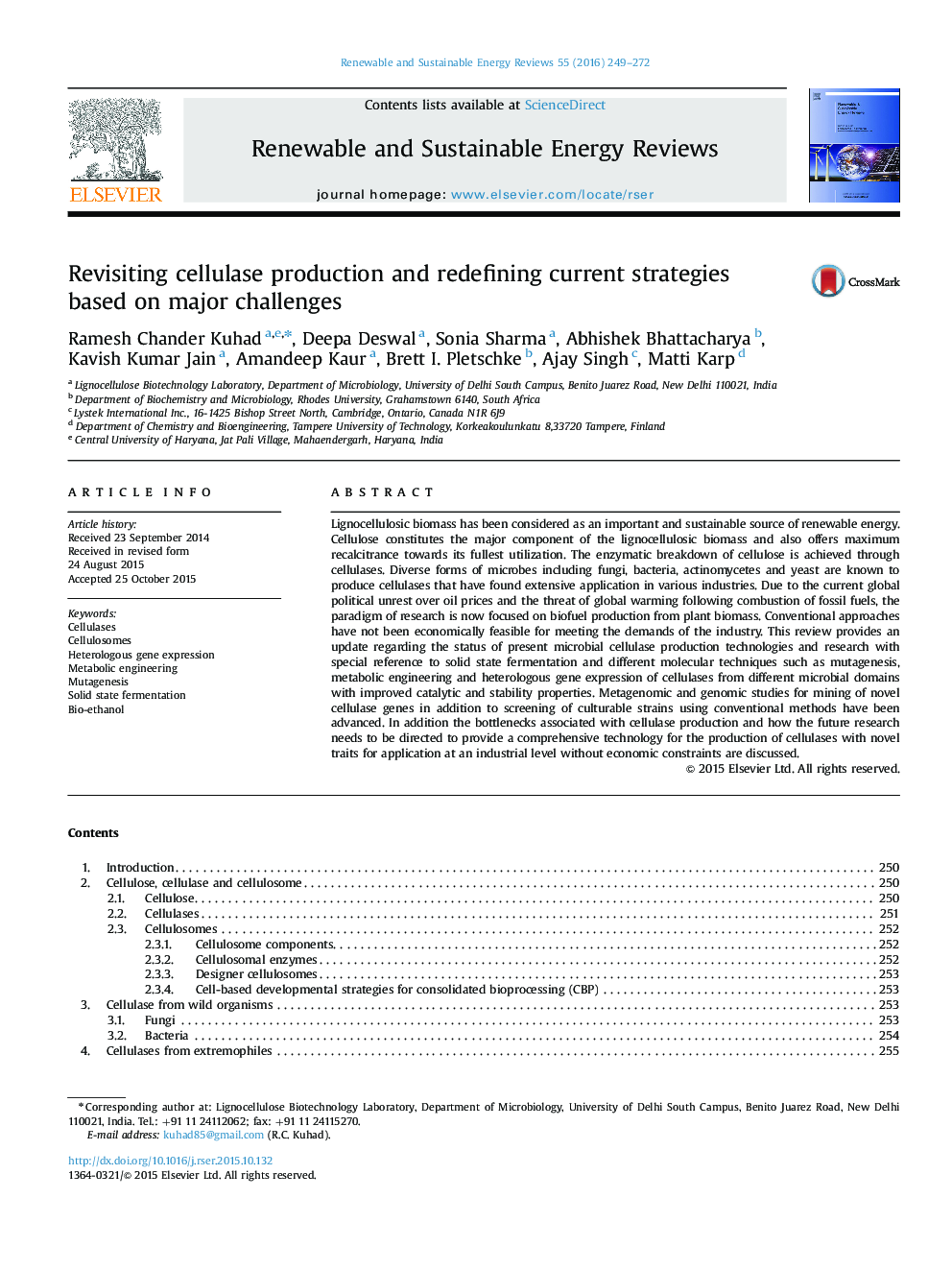| Article ID | Journal | Published Year | Pages | File Type |
|---|---|---|---|---|
| 8115187 | Renewable and Sustainable Energy Reviews | 2016 | 24 Pages |
Abstract
Lignocellulosic biomass has been considered as an important and sustainable source of renewable energy. Cellulose constitutes the major component of the lignocellulosic biomass and also offers maximum recalcitrance towards its fullest utilization. The enzymatic breakdown of cellulose is achieved through cellulases. Diverse forms of microbes including fungi, bacteria, actinomycetes and yeast are known to produce cellulases that have found extensive application in various industries. Due to the current global political unrest over oil prices and the threat of global warming following combustion of fossil fuels, the paradigm of research is now focused on biofuel production from plant biomass. Conventional approaches have not been economically feasible for meeting the demands of the industry. This review provides an update regarding the status of present microbial cellulase production technologies and research with special reference to solid state fermentation and different molecular techniques such as mutagenesis, metabolic engineering and heterologous gene expression of cellulases from different microbial domains with improved catalytic and stability properties. Metagenomic and genomic studies for mining of novel cellulase genes in addition to screening of culturable strains using conventional methods have been advanced. In addition the bottlenecks associated with cellulase production and how the future research needs to be directed to provide a comprehensive technology for the production of cellulases with novel traits for application at an industrial level without economic constraints are discussed.
Keywords
Related Topics
Physical Sciences and Engineering
Energy
Renewable Energy, Sustainability and the Environment
Authors
Ramesh Chander Kuhad, Deepa Deswal, Sonia Sharma, Abhishek Bhattacharya, Kavish Kumar Jain, Amandeep Kaur, Brett I. Pletschke, Ajay Singh, Matti Karp,
